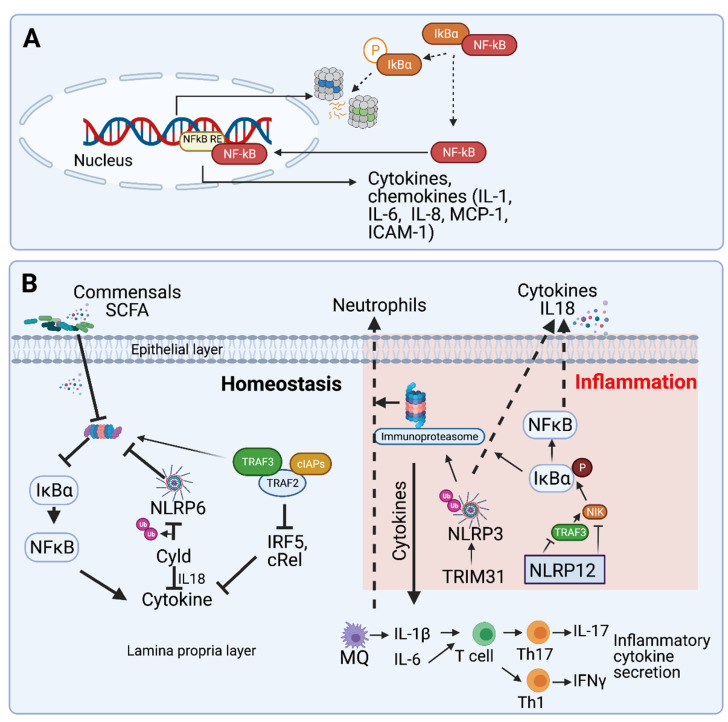Figure 2.
(A) Proteasome-dependent NFκB signaling: Under steady state, NFκB is kept inactive by association with IκB. Inflammatory signals induce the phosphorylation of IκB, its dissociation from NFκB, and degradation by the proteasome. Upon the release from IκB, NFκB translocates to the nucleus, leading to transactivation of inflammatory cytokines, chemokines (IL-6, IL-8, IL-1, etc.), and apoptotic genes (ICAM-1, Bcl) [23]. (B) Proteasomes at the crossroad between gastrointestinal homeostasis and inflammation: Various proteasomal degradation events restrict constitutive inflammation and maintain homeostasis. Metabolites secreted by commensals such as L. casei block proteasome activation, which in turn leads to reduction in IκB degradation, thereby hindering NFκB activation [47]. Cyld, a deubiquitinating enzyme, deubiquitinates NLRP6, prevents NLRP6 degradation, and enhances release of IL-18 [48]. The TRAF2/3 complex activates cRel and IRF5 that induce pro-inflammatory cytokines in response to danger stimuli. The E3 ligase cIAP is recruited to the TRAF2/3 complex, leading to the degradation of both TRAF2 and TRAF3, thereby limiting production of inflammatory cytokines [49].

